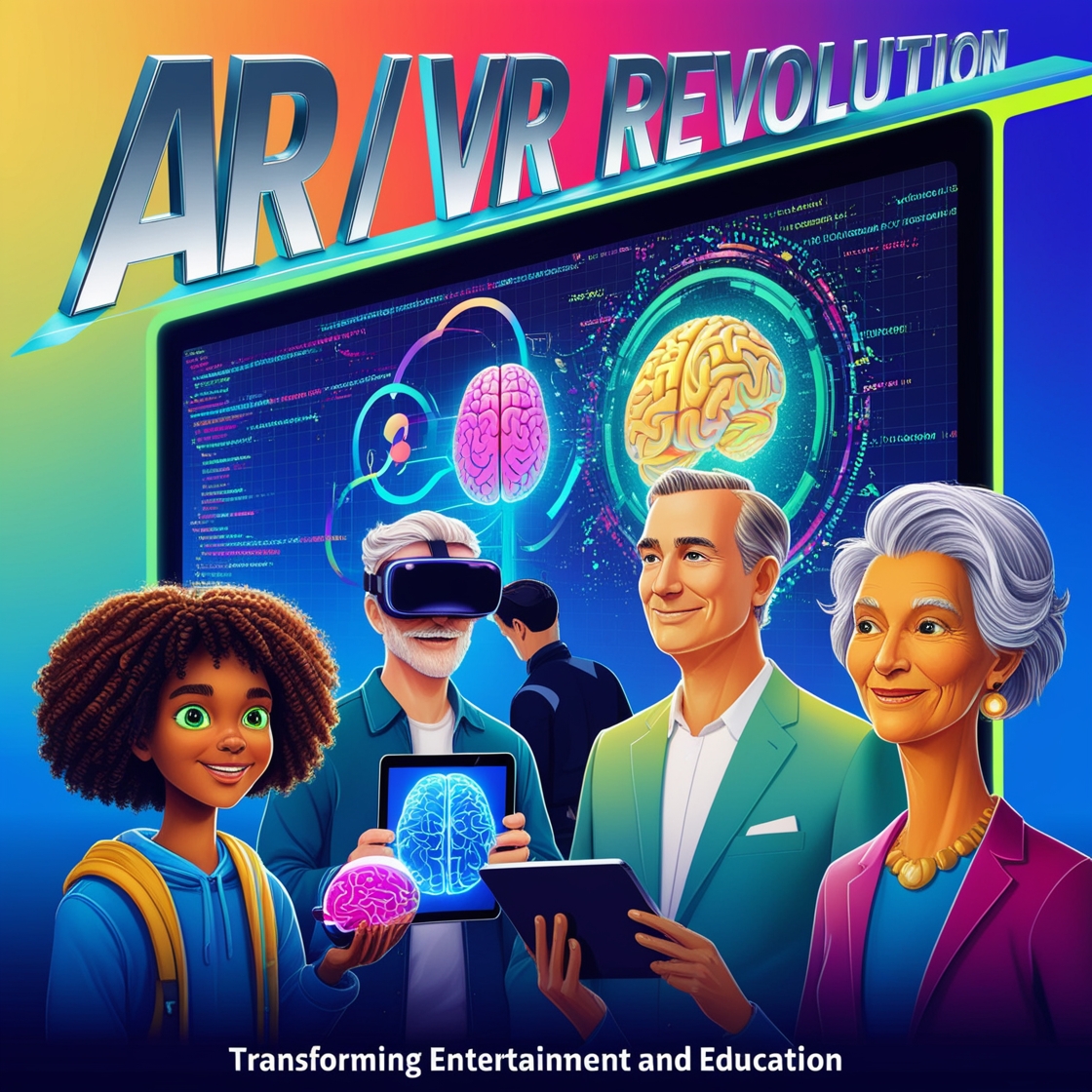Introduction
The Rise of AR and VR
AR (Augmented Reality) and VR (Virtual Reality) have rapidly emerged as groundbreaking technologies redefining how we interact with digital and physical worlds. Once considered futuristic concepts, these tools are now widely accessible and integrated into our daily lives.
Why AR and VR Matter Today
The ability of AR and VR to create immersive, engaging experiences has made them crucial in industries like entertainment and education. They’re not just buzzwords; they’re powerful tools shaping the future.
Understanding AR and VR
What is Augmented Reality (AR)?
AR overlays digital elements onto the real world using devices like smartphones or AR glasses. Think Pokémon Go or AR-based furniture placement tools.
What is Virtual Reality (VR)?
VR creates entirely immersive environments, requiring specialized headsets like Oculus or HTC Vive. Users are transported to virtual worlds, disconnected from their physical surroundings.
Key Differences Between AR and VR
While AR enhances the real world, VR replaces it entirely. Both technologies, however, share a common goal: to provide interactive and immersive experiences.
AR and VR in Entertainment
Enhancing Gaming Experiences
Immersive Gameplay and Interactions
VR gaming offers players the chance to step inside their favorite games, wielding virtual swords or exploring alien landscapes as if they were physically there.
Multiplayer and Social Features
AR and VR allow players to interact with others in shared digital spaces, fostering community and teamwork.
Transforming Live Events
Virtual Concerts and Sports
AR and VR enable fans to enjoy live events from their living rooms. Imagine attending a front-row concert or viewing a soccer match from a virtual stadium.
Interactive Movie Watching
These technologies are also revolutionizing how we watch films, turning passive viewing into active, interactive storytelling.
Theme Parks and Virtual Rides
Theme parks now incorporate VR to enhance rides, creating thrilling experiences that wouldn’t be possible otherwise.
AR and VR in Education
Interactive Learning Tools
Virtual Classrooms and Labs
VR enables students to explore virtual laboratories or attend classes in digital spaces, offering hands-on learning experiences.
AR in Textbooks and Lessons
AR brings lessons to life, allowing students to interact with 3D models of historical artifacts or biological structures.
Training and Skill Development
Medical Training Simulations
Medical students use VR to practice surgeries in a risk-free environment, honing skills without endangering lives.
Engineering and Technical Skill Development
From architecture to mechanics, VR provides training platforms for designing, testing, and improving technical skills.
Expanding Accessibility in Learning
AR and VR help students with disabilities by offering tailored, adaptive learning environments.
Advantages of AR and VR in Both Fields
Immersive and Engaging Experiences
These technologies captivate users, whether they’re learning or enjoying entertainment.
Breaking Geographical Barriers
People can access events, courses, and experiences from anywhere in the world.
Personalized and Adaptive Learning
AI-powered VR systems adapt to individual learning speeds and preferences.
Challenges and Limitations
Cost and Accessibility
High-quality AR and VR devices are expensive, limiting widespread adoption.
Technological Limitations
Issues like motion sickness and hardware limitations still hinder usability.
Ethical Concerns and Privacy
As these technologies collect vast amounts of data, concerns about privacy and ethical usage arise.
The Future of AR and VR
Emerging Technologies
Advancements like haptic feedback and 3D spatial audio will further enhance AR and VR experiences.
Integration with AI and IoT
The fusion of AR/VR with AI and IoT will enable smarter, more connected systems.
Forecasting Market Trends
The AR and VR market is projected to grow exponentially, indicating a bright future for these transformative tools.
Conclusion
AR and VR are not just reshaping entertainment and education—they’re revolutionizing how we engage with the world. These technologies are powerful, immersive tools that have the potential to break barriers, personalize experiences, and open doors to endless possibilities.
FAQs
- What are some examples of AR in daily life?
AR is used in apps like Snapchat filters, IKEA Place for furniture planning, and educational AR apps for interactive learning. - How do VR headsets work?
VR headsets use lenses and screens to create a 3D environment, tracking your movements to make the experience immersive. - Can AR and VR be combined?
Yes, AR and VR can merge into Mixed Reality (MR), blending real and virtual worlds seamlessly. - What are the costs associated with AR and VR?
Prices range from affordable smartphone AR apps to premium VR setups costing several thousand dollars. - Are AR and VR safe for children?
While generally safe, prolonged use can cause eye strain or disorientation. Always supervise and limit usage for younger users.
